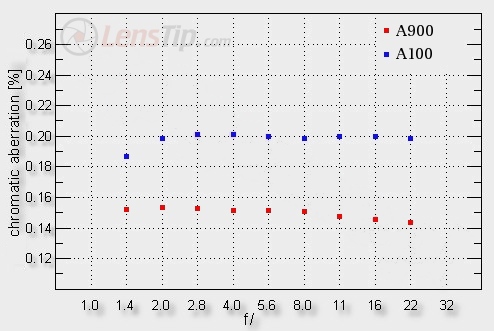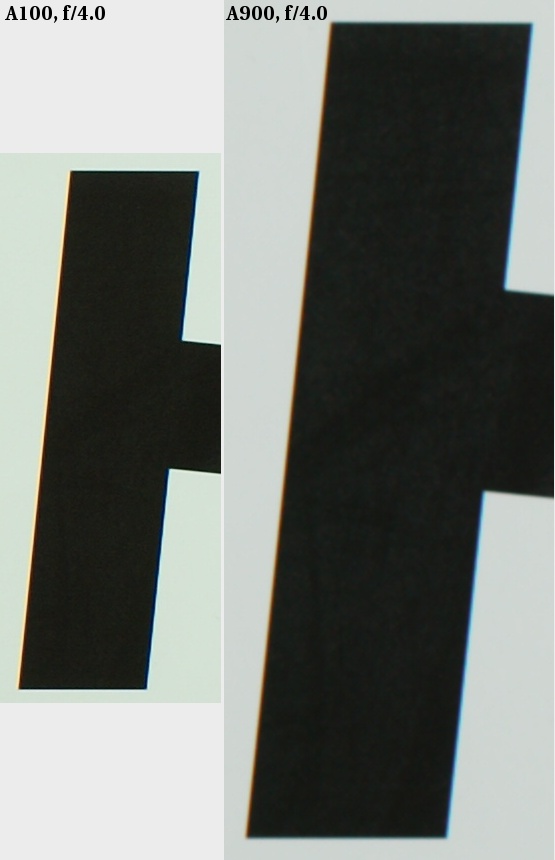Sony 35 mm f/1.4G
5. Chromatic aberration
There is a problem, though, because if you take the measurement in pixels you favour the reflex cameras with bigger pixels. To make the result more objective, you should convert the area in pixel into more rational units like square millimeters. The result still won’t tell us everything, although it will be more objective, because it will eliminate the differences between a full frame and smaller detectors. So the best way is to express aberration by a percentage scale - you measure the aberration in pixels and then you divide the result by a half of the picture diameter, also expressed in pixels. This operation allows us to eliminate partially the influence of the pixels’ size and the detector’s size as well. How it works in practice can be seen in the chart presented below, which shows the Sony 1.4/35 chromatic aberration, measured on the A100 and the A900 picture fringe.

Please Support UsIf you enjoy our reviews and articles, and you want us to continue our work please, support our website by donating through PayPal. The funds are going to be used for paying our editorial team, renting servers, and equipping our testing studio; only that way we will be able to continue providing you interesting content for free. |
- - - - - - - - - - - - - - - - - - - - - - - - - - - - - - - - - - - - - - - - - - - - - - - -
At first glance the results are strange because the full frame aberration seems to be lower than the small matrix aberration. When we remind ourselves what kind of operations are made to express the results as percentages, we can understand that the A900 aberration is divided by a number 1.5 times bigger than in the case of the A100. If you wanted to compare directly the results from both cameras, you would have to multiply the A900 results 1.5 times, which would give the 0.22-0.23% level, so about 0.02-0.03% more than for the A100.
The problem is that any 1:1 excerpts or similar are not a good way to assess the lateral chromatic aberration because in practice they are taken, if at all, mainly from the center of the frame and this aberration doesn’t exist there. You must take the whole frame into account to assess the aberration well and in this perspective it will bother us less on A900 than on A100, what can be clearly seen in our chart.
It doesn’t change the fact that the Sony 1.4/35 chromatic aberration is not the lowest and it will be perceptible on the pictures. The proof can be seen in these excerpts from the two cameras used in the test.







